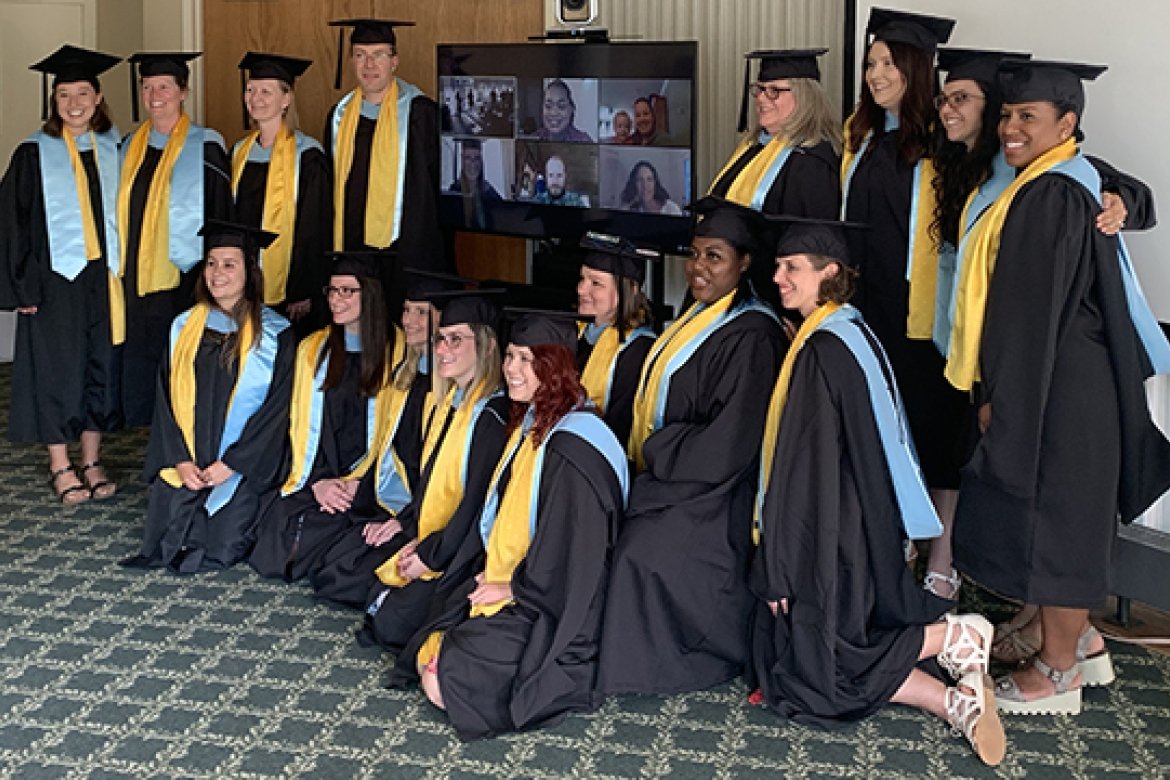Turning traditional math teaching on its head

Mount Holyoke’s Professional and Graduate Education program launched its fifth cohort of math teachers ready to change the world, one mind at a time.
Nearly everyone can conjure a memory of terrible math classes — the ones that required endless memorization of tables and formulas, hours of tedious homework, reams of worksheets, all while never truly conveying anything meaningful about the underlying mathematical ideas.
But 21 students who have just been awarded their Master of Art in Teaching Mathematics degrees from Mount Holyoke College are poised to change all that. They received their degrees at a ceremony on July 19, the fifth group to graduate since the degree program began in 2013. With their new degrees that represent skills, knowledge and commitment to the craft of teaching, they are set to bring new life and passion into the math classroom and inspire young learners to dig deeper to understand complex mathematical concepts.
“This is the latest round of math teacher-leaders going out into the field and making a difference,” said Mike Flynn, director of Mathematics Leadership Programs. “Whether it’s making a difference at their school, or in the country by becoming an advocate and presenting their ideas at national conferences.”
The Mount Holyoke program focuses on developing teachers with the depth of knowledge and confidence to develop student-focused curricula and the leadership skills to implement those new ideas in schools, across districts and beyond.
Dylan Swift MAT’19 is one new leader striking out to make a difference in the way math is taught to kids.
“I believe that kids can figure out the math for themselves on a conceptual level,”
said Swift, who will be beginning a new position in a district that uses a student-centered curriculum designed by another Mount Holyoke professional, Cathy Fosnot, who had previously worked with the program.
Kaneka Turner MAT’15 is now a sought-after speaker and teacher within the teacher leadership world, where she guides others — just as they teach her.
“One of the things I took from the program was a confidence in my ability to learn,” she said. “Before the Mount Holyoke program I wasn’t sure I knew enough. The program helped me understand that you can be in the process of learning and you can still step into the role of teacher.”
Turner, originally from North Carolina, attended the program — all three summers and two academic years — in person, because she wanted to immerse herself in the Mount Holyoke community.
But some students opt to complete the program without ever stepping foot on campus, attending class and participating in discussions remotely. Indeed, several of the new graduates attended the graduation ceremony online as their peers assembled to mark the occasion and celebrate their accomplishments.
Tracy Zager, author of “Becoming the Math Teacher You Wish You Had: Ideas and Strategies from Vibrant Classrooms,” delivered the keynote speech, in which she recalled a time when her daughter was stymied by a math problem that featured a boy named Tommy who graphed his own milk-drinking habits.
“I remember my daughter said to me, ‘Mom, what’s the matter with Tommy? Why would you take data about that?’” Zager said, laughing.
That conversation sparked another between Zager and her daughter’s teacher, who then had the class generate their own questions to engage with the problem in a meaningful way to them.
These small interventions upend the typical power structure in a classroom — where a teacher delivers information and students passively receive it. Instead, they create a dynamic, engaging curriculum that embeds concepts within questions that are real and relevant to the students that develop them.
“You all now are my colleagues,” said Zager to the graduates, her voice unsteady with emotion. “We engage in this work together, and the more you know, the harder it becomes. It takes all of us working together. I am honored and thrilled that you have chosen this profession and I look forward to learning beside you for a long time.”